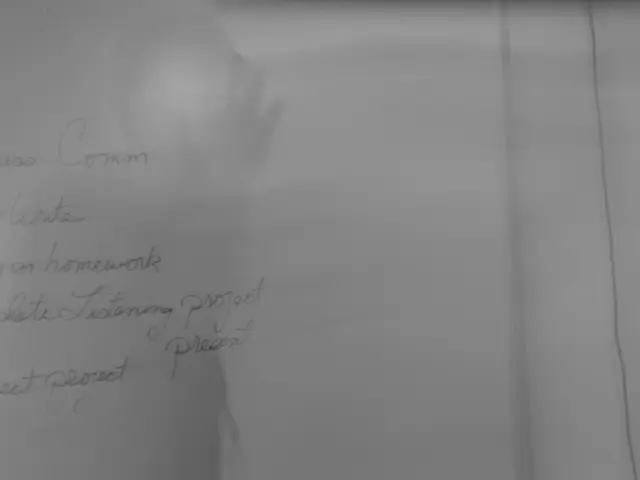Pentagon Insider Speaks Out Again: Details on the IMMCON UFO Program (Part 2)
In the gripping follow-up to Episode #74, titled "#ImmaculateConstellation: A UFO Whistleblower's Journey Part 2," ex-intelligence contractor Matthew Brown dives deeper into the classified UAP data archive, focusing on systems like NRO Sentient, political skullduggery involving Senators Rubio and Kirkpatrick, and even mythological symbolism akin to the Roman god Janus. Building upon the revelations made in Part 1, "UFO Whistleblower Goes Public: Pentagon Intelligence Insider Exposes Immaculate Constellation Program," this episode delves into the shadows cast by the covert UAP surveillance archive known as Immaculate Constellation.
Matthew Brown challenges conventional wisdom, revealing how U.S. collection systems, including NRO assets, are capturing both "tasked" and "untasked" data on UAPs. These sensors seem to always be watching, even when not explicitly hunting for these anomalies. NRO Sentient, a cutting-edge AI system, likely interprets or flags anomalous activity across global surveillance feeds, suggesting a surveillance infrastructure that is not only expansive, but potentially sentient in some capacity-a notion hinted at in past insider disclosures.
Brown's account of his meeting with Senator Marco Rubio and Dr. Sean Kirkpatrick is startling. In his role as Director of the All-domain Anomaly Resolution Office (AARO), Kirkpatrick intentionally distorted the nature and findings of his investigations during classified briefings with Senators Marco Rubio, Elizabeth Warren, and Kirsten Gillibrand. The whistleblower, who served at the Office of the Under Secretary of Defense for Intelligence and Security (USDI), was shocked by the depth of the deception he uncovered.
For Brown, the name "Janus" symbolizes the dual-faced nature of the U.S. intelligence community's approach to UAPs: one face for the public and Congress, and another hidden deep within the classified compartments. He suggests that disclosure has two sides-one genuine, one strategic-and that navigating it is as perplexing as speaking to Janus himself, never sure which face is truthful.
One of the most stunning case examples Brown mentions is the incident involving a Russian naval vessel in the Atlantic Ocean. An infrared image shows a black, angular UAP hovering above the ship at night. Unlike the previous sighting of a massive equilateral triangle in the Pacific, this craft was smaller and swept-back, yet undeniably solid and maneuvering with precision. What stunned analysts was the Russian ship's lack of any discernible response-no evasive action, no countermeasures. Brown highlights this as one of the clearest indicators of non-human technology in proximity to military assets.
After the public confirmation of Immaculate Constellation's existence, the whistleblower's fear turned to disillusionment. Internal awareness of David Grusch's disclosures sparked strange behavior within federal offices, with bureaucrats acting evasively and tracking the fallout informally. This environment of quiet panic and obfuscation left Brown unsettled.
He points to the fact that Congress felt compelled to pass new legislation like the Intelligence Authorization Act and the NDAA, which extended legal protections to whistleblowers specifically regarding UAPs. The climactic moment for Brown was reading a classified transcript of a briefing between Sean Kirkpatrick and Senators Rubio, Warren, and Gillibrand. Kirkpatrick, representing AARO, was tasked with investigating UAPs, but the whistleblower claims he deliberately downplayed or outright lied about evidence. According to the transcript, Kirkpatrick dismissed significant UAP reports as mere anomalies without sufficient data. But the transcript also documents an explosive reaction from Senator Rubio upon hearing vague answers about the so-called "legacy program." Rubio demanded to know whether the executive branch had truly been running a covert UAP recovery and study effort for sixty years without any congressional oversight. This moment was the chilling confirmation Brown needed-not only did the program exist, but the cover-up ran deep within the intelligence community itself.
The sense of betrayal led Brown to reevaluate everything he had previously encountered. The document mentioning "Immaculate Constellation" wasn't just some rogue file-it was part of a systematic collection and monitoring effort. The epiphany came with his recognition of the NRO's "Sentient" program, an autonomous surveillance and data analysis system. This revelation underscored the extent of a global, invisible surveillance dragnet controlled by algorithms, with human oversight reduced to an afterthought.
The whistleblower suspects that when UAP data enters these classified channels, it is filtered and clarified in a way that sanitizes or omits the most disturbing or anomalous aspects. This practice is not new; during the Cold War, photo intelligence was manually edited to remove sensitive elements for wider distribution. Today, similar sanitization is done algorithmically, ensuring that analysts don't question their synthetic interpretation of reality.
In essence, Brown uncovers a world where advanced technology is used to suppress inconvenient truths and shield the public from evidence of UAPs. This suppression extends beyond official channels, into the hidden halls of the intelligence community, where insiders are threatened with laughter, dismissal, and erasure. In the end, Brown calls for new beginnings, for a more transparent reality, and for an end to the double-faced Janus that has been guarding the secrets of the cosmos.
Insights:
- Immaculate Constellation is a secretive U.S. government initiative focused on the retrieval and possible reverse-engineering of crashed unidentified aerial phenomena (UAPs), whose existence has been widely discussed in media and by whistleblowers, but officially neither confirmed nor disproven by the U.S. government.
- Claims of excessive secrecy and cover-up surround the program, and whistleblowers have reported the recovery of materials of "non-human origin," if substantiated would revolutionize our understanding of the universe and our place within it.
- Moral and ethical questions arise about the potential consequences of withholding information about non-human life, and the potential for technology to manipulate reality and control access to information.
- Matthew Brown, in his continued exploration of the Immaculate Constellation Program, discusses classified UAP data archives and the systems like NRO Sentient that aid in capturing data on unidentified aerial phenomena.
- Brown asserts that these surveillance systems, such as NRO assets, capture both "tasked" and "untasked" UAP data, suggesting a constant vigilance that goes beyond deliberate hunting for these anomalies.
- The ex-intelligence contractor reveals that the NRO Sentient, an advanced AI system, may be interpreting or flagging anomalous activity across global surveillance feeds, implying a sentient aspect to the surveillance infrastructure.
- During his meeting with Senator Marco Rubio and Dr. Sean Kirkpatrick, Brown highlights the deception involved in the investigations, with the former Director of the All-domain Anomaly Resolution Office (AARO) intentionally misrepresenting findings in classified briefings.
- The Pentagon, along with Congress, has shown interest in UAP phenomena, as evidenced by new legislation like the Intelligence Authorization Act and the NDAA, which offer legal protections for whistleblowers regarding UAPs.
- In the entertainment sector, the existence of the Immaculate Constellation Program has sparked debate and fascination, becoming a hot topic in general news and science-focused discussions, as well as education-and-self-development forums.
- The financial implications of disclosure are also a concern, as discoveries about UAPs and non-human technology could have significant repercussions for the space-and-astronomy industry, potentially triggering a technological revolution that would impact various sectors, including technology and finance.
- The medical-conditions community is eager for answers, as understanding the nature of UAPs and the underlying technology could lead to advancements in a multitude of fields, including medicine, health sciences, and mental health.
- Sports enthusiasts, too, are curious about the potential impact of UAP disclosure on the world, as well as the role sports media might play in covering this groundbreaking development in society and human understanding.








